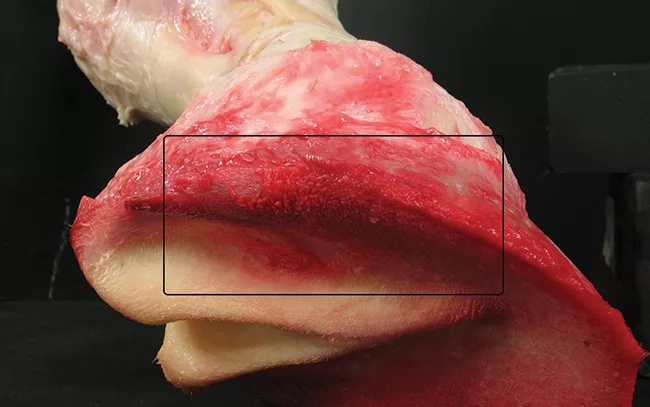American Farriers Journal
American Farriers Journal is the “hands-on” magazine for professional farriers, equine veterinarians and horse care product and service buyers.

Farriers and equine veterinarians sometimes seem more concerned with a horse’s front feet and tend to overlook the hind feet or leave them unshod. However, several common concerns can negatively affect not only the structures of the hind foot, but also the overall performance of the horse.
This article offers an anatomical example of a specific hind foot conformation and the common pathology that goes with it. This conformation is common with Thoroughbreds and warmbloods that toe out and stand forward. The associated hoof morphology is typified by a strong arch in the toe area along with a weak or collapsed arch in the heel area.
Figure 1 offers a specific anatomic example of the morphology found in this right hind foot. The bottom of the foot shows some outward signs of the pathologies found in the foot. You can see a rounding of the sole and separation of white line tissue in the lateral heel area. These represent a descending movement of the arch of the lateral heel.
After trimming the hoof capsule to a horizontal plane and removing some of the hoof wall, the vertical depth of the sole is slightly thicker and darker in color in the lateral heel area. This leads to stress in this region that causes the white line to increase its vertical depth followed by a decrease in the vertical depth of the sensitive lamina (Figure 2).

Figure 1. The bottom of the foot shows outward signs of several common…